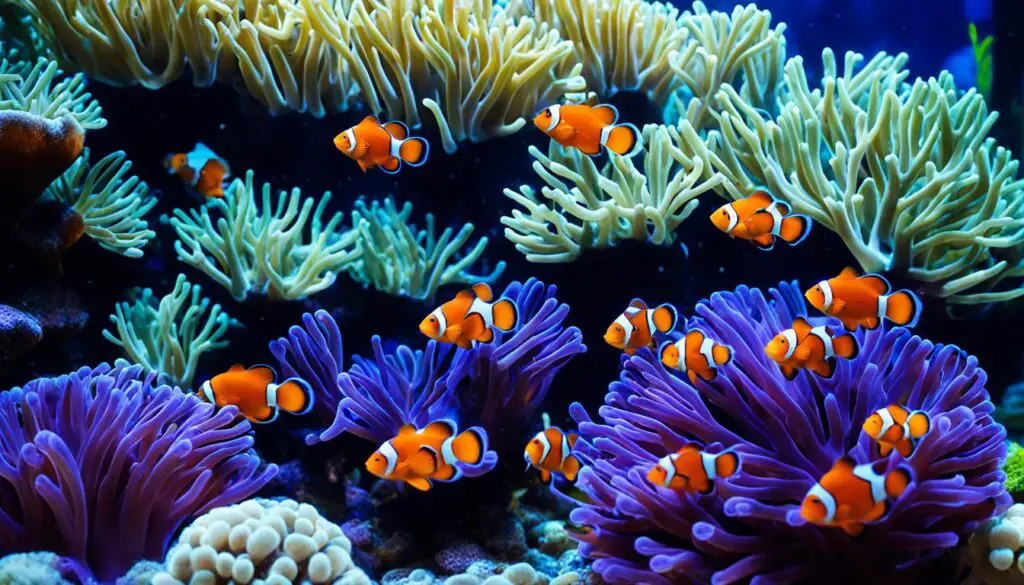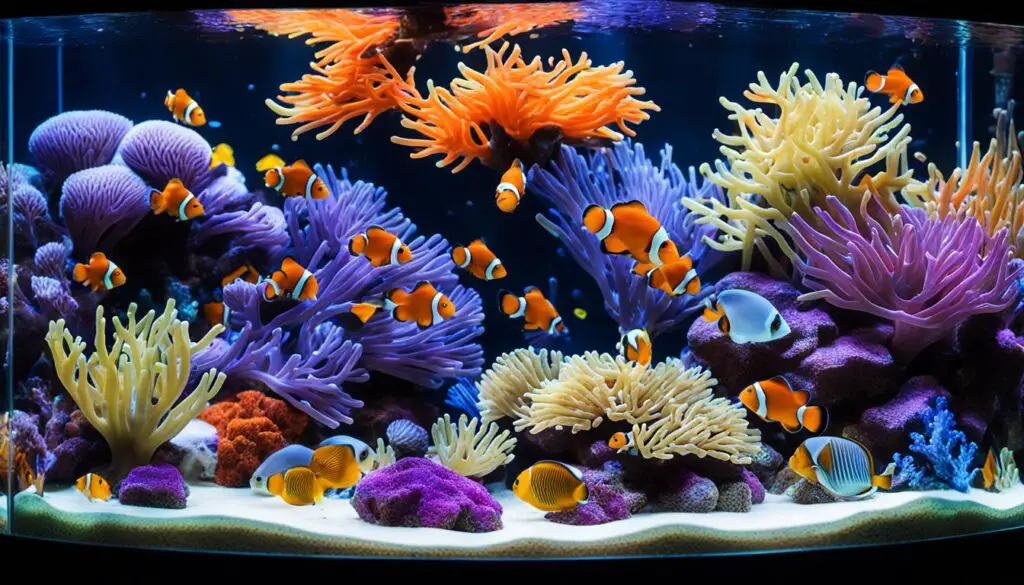How Does Biodiversity Change During Succession
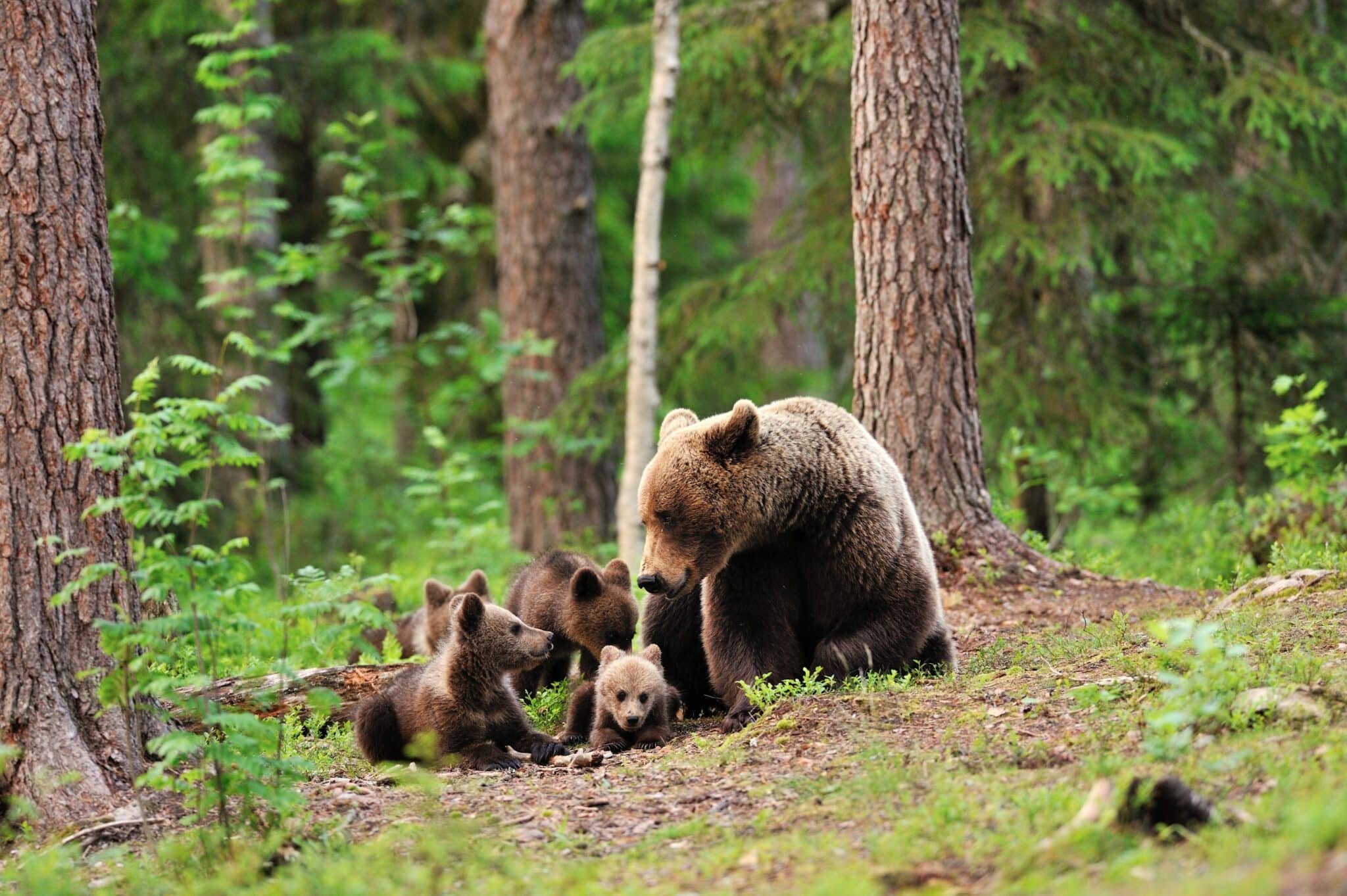
Introduction
How Does Biodiversity Change During Succession: Biodiversity is a term that refers to the variety of life forms found in a particular ecosystem or on the entire planet. It encompasses the diversity of species, genes, and ecosystems, and plays a crucial role in maintaining the health and stability of our planet. One of the key factors that influence biodiversity is ecological succession, which is the process of change in the species composition and structure of an ecological community over time.
Ecological succession occurs in response to disturbances or changes in environmental conditions, such as fires, floods, or human activities. It can be classified into two main types: primary succession and secondary succession. Primary succession occurs in areas where no soil or organisms exist, such as after a volcanic eruption or the retreat of a glacier. In contrast, secondary succession occurs in areas where the soil and some organisms remain after a disturbance, such as after a forest fire or the abandonment of agricultural land.
During the process of succession, the biodiversity of an ecosystem undergoes significant changes. In the early stages of succession, the number of species and overall biodiversity tends to be relatively low. Pioneer species, which are the first organisms to colonize a disturbed area, are typically hardy and adaptable, but have limited diversity. As the ecosystem progresses through different stages of succession, the number of species and the complexity of interactions between them increase.
As the community matures, more specialized and diverse species are able to establish themselves, leading to a higher overall biodiversity. This increase in biodiversity is often accompanied by an increase in the stability and resilience of the ecosystem, as different species fulfill different ecological roles and provide a variety of ecosystem services. However, it is important to note that the rate and extent of biodiversity change during succession can vary depending on factors such as the type and severity of the disturbance, the availability of resources, and the presence of invasive species.
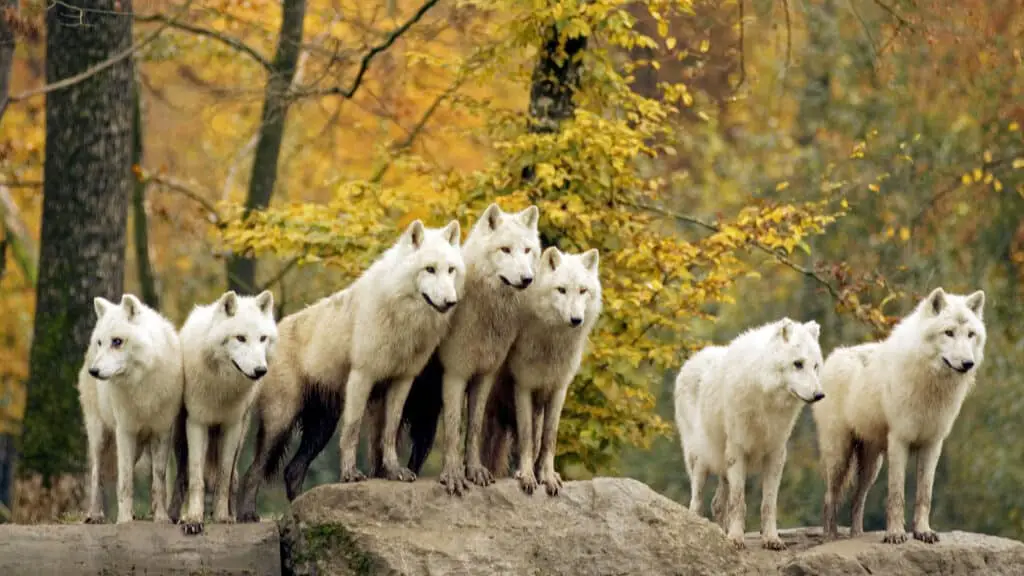
How does biodiversity change with succession?
Answer and Explanation: During the processes of ecological succession, both biomass productivity and biodiversity increase. This means that there are more organisms with greater species diversity at each stage of succession than in the previous stage.
Biodiversity refers to the variety of living organisms in a particular ecosystem. It encompasses the number of different species, their genetic variation, and the interactions between them. Biodiversity is not static and can change over time, particularly with the process of succession. Succession is the gradual and predictable change in the composition and structure of an ecosystem over time.
During the early stages of succession, after a disturbance such as a fire or a volcanic eruption, the biodiversity of an ecosystem is typically low. This is because only a few pioneer species, which are well-adapted to harsh conditions, are able to colonize the area. These pioneer species are often characterized by their ability to tolerate extreme temperatures, low nutrient levels, and other challenging environmental conditions. As a result, the number of different species present in the ecosystem is limited.
However, as succession progresses and the ecosystem becomes more stable, the biodiversity gradually increases. This is because new species are able to colonize the area, either by dispersing from nearby habitats or by being brought in by animals or wind. These new species are often better adapted to the changing environmental conditions and are able to outcompete the pioneer species. As a result, the number of different species in the ecosystem increases, leading to a higher biodiversity.
Furthermore, as succession continues, the structure of the ecosystem also changes. The pioneer species, which were initially dominant, are gradually replaced by other species that are better adapted to the changing conditions. This leads to a more complex and diverse community of organisms. The increased biodiversity not only provides more opportunities for interactions between species but also enhances the stability and resilience of the ecosystem.
Biodiversity changes with succession as the ecosystem transitions from a disturbed state with low species diversity to a more stable state with higher species diversity. This process is driven by the colonization of new species and the replacement of pioneer species by better-adapted species. The increased biodiversity not only enhances the complexity and stability of the ecosystem but also provides more opportunities for interactions between species.
How does biodiversity change during succession quizlet?
Biodiversity is the variety of life in an area. Think about the process of succession. How does biodiversity change during succession? Biodiversity increases through the process of succession.
Biodiversity refers to the variety of living organisms in a particular ecosystem or habitat. It is a measure of the number of different species present and the abundance of each species. Biodiversity is not static and can change over time, particularly during the process of succession. Succession is the gradual and predictable change in the composition of species in an ecosystem over time.
During succession, the biodiversity of an ecosystem can change in several ways. Initially, after a disturbance such as a fire or a volcanic eruption, the biodiversity may be low as only a few pioneer species are able to survive and colonize the area. These pioneer species are typically hardy and can tolerate harsh conditions. As succession progresses, more species are able to establish themselves in the area, leading to an increase in biodiversity.
As the ecosystem becomes more established, the biodiversity continues to increase. This is because different species have different ecological niches and can occupy different roles within the ecosystem. This leads to a greater variety of species and a higher overall biodiversity. The presence of a greater number of species also increases the stability of the ecosystem, as there are more interactions and relationships between organisms.
However, as succession continues and the ecosystem reaches a climax community, the biodiversity may start to decrease. This is because the dominant species in the climax community are often highly competitive and can outcompete other species for resources. This leads to a decrease in the number of species present and a decrease in overall biodiversity.
Biodiversity can change during succession. Initially, after a disturbance, biodiversity may be low, but it increases as more species establish themselves in the area. However, as the ecosystem reaches a climax community, the biodiversity may start to decrease. Understanding how biodiversity changes during succession is important for conservation efforts and managing ecosystems.
Why does secondary succession increase biodiversity?
During secondary succession, tropical forests increase in structural complexity, taxonomic diversity, and functional diversity. These changes lead to accumulation of carbon and nutrients in aboveground vegetation and create habitats for forest dwelling animal species.
Secondary succession is the process by which an ecosystem recovers and regenerates after a disturbance, such as a fire, flood, or human activity, has significantly altered the existing community. Unlike primary succession, which occurs in areas where no soil or organisms exist, secondary succession takes place in areas where the soil and some organisms are still present. This allows for a quicker recovery and the reestablishment of a diverse community of species.
One of the main reasons why secondary succession increases biodiversity is the availability of resources and space. After a disturbance, the existing vegetation is often cleared, creating open areas for new plants to colonize. These open areas provide an opportunity for a wide range of plant species to establish themselves and compete for resources such as sunlight, water, and nutrients. As a result, a greater variety of plant species can coexist in the ecosystem, leading to increased biodiversity.
In addition to providing space for new plants, secondary succession also creates a variety of microhabitats within the ecosystem. As the vegetation begins to regrow, different plant species colonize different areas based on their specific requirements. Some plants may prefer sunny, open areas, while others thrive in shaded areas or near water sources. This variation in microhabitats allows for the coexistence of a greater number of plant species, each adapted to a specific set of conditions.
Furthermore, secondary succession promotes the establishment of a diverse community of animal species. As the plant community regenerates, it provides food and shelter for a variety of animals. Different plant species attract different types of insects, which in turn attract insect-eating birds and other predators. The presence of a diverse plant community also supports a greater variety of herbivores, which in turn attract carnivores. This interconnected web of interactions between plants and animals contributes to the overall biodiversity of the ecosystem.
Lastly, secondary succession allows for the reintroduction of species that may have been absent or rare in the previous community. Disturbances can create opportunities for the dispersal and colonization of species from nearby areas, increasing the overall species richness of the ecosystem. This influx of new species can enhance the resilience and adaptability of the ecosystem, making it more resistant to future disturbances.
Which stage of succession has the most biodiversity?
Secondary succession is usually faster than primary succession because soil and nutrients are already present due to ‘normalization’ by previous pioneer species, and because roots, seeds and other biotic organisms may still be present within the substrate.
Succession is the process by which an ecosystem changes over time, typically following a disturbance such as a fire or a clear-cutting of a forest. It involves a series of predictable stages, each with its own unique characteristics and species composition. Biodiversity refers to the variety of different species and their interactions within an ecosystem. Therefore, the stage of succession with the most biodiversity would be the one that supports the greatest number of different species and the most complex ecological interactions.
One of the earliest stages of succession is known as the pioneer stage. This stage occurs immediately after a disturbance and is characterized by the colonization of the area by fast-growing, opportunistic species such as grasses and weeds. While this stage may have a high abundance of individuals, it typically has low biodiversity as only a few species are able to tolerate the harsh conditions and limited resources available.
As succession progresses, the next stage is known as the intermediate stage. This stage is characterized by the establishment of shrubs and small trees, which provide more shade and resources for other species. The increased availability of resources in this stage allows for a greater diversity of species to establish and thrive. Therefore, the intermediate stage often has higher biodiversity compared to the pioneer stage.
As succession continues, the next stage is known as the climax stage. This stage represents the final, stable community that is characteristic of the particular ecosystem. The climax stage typically has the highest biodiversity as it supports a wide range of species that have adapted to the specific environmental conditions of the ecosystem. These species have complex ecological interactions and are often highly specialized.
the stage of succession with the most biodiversity is the climax stage. This stage represents the final, stable community that supports a wide range of species and complex ecological interactions. However, it is important to note that biodiversity can vary depending on the specific ecosystem and the disturbance history of the area.
What is the change during biotic succession?
During succession, some species colonies area and their population become more numerous, whereas, the population of other species declines and even disappears. It is a process of systematic progression of types of species invading an area.
Biotic succession refers to the process of change in the species composition and community structure of an ecosystem over time. It occurs in response to environmental disturbances or changes, such as natural disasters, human activities, or climate change. During biotic succession, there are several key changes that take place, including changes in species diversity, biomass, and community interactions.
One of the main changes during biotic succession is the increase in species diversity. As the ecosystem recovers from a disturbance, new species gradually colonize the area. These pioneer species are typically fast-growing and able to tolerate harsh conditions. Over time, as the environment becomes more stable, a greater variety of species can establish and thrive. This leads to an increase in species diversity, as different species occupy different niches and utilize different resources.
Another change during biotic succession is the increase in biomass. As more species establish and grow, the overall biomass of the ecosystem also increases. This is because each species contributes to the total amount of organic matter in the ecosystem through photosynthesis and other metabolic processes. As the ecosystem matures, the biomass continues to accumulate, reaching a peak before stabilizing.
Community interactions also change during biotic succession. In the early stages of succession, competition between species may be intense as they vie for limited resources. However, as the ecosystem matures, different species may develop symbiotic relationships, such as mutualism or commensalism, where they benefit from each other’s presence. These interactions can enhance the stability and resilience of the ecosystem.
Additionally, the structure of the community may change during biotic succession. In the early stages, the community may be dominated by a few pioneer species. However, as succession progresses, these early colonizers may be replaced by other species that are better adapted to the changing conditions. This can result in a shift in the dominant species and a restructuring of the community.
What factors contribute to changes in biodiversity during succession?
There are several factors that contribute to changes in biodiversity during succession. One of the main factors is the availability of resources. As the environment changes during succession, different resources become available or limited, which can lead to changes in the types of species that can survive and thrive in the area. For example, in the early stages of succession, there may be limited resources such as sunlight and nutrients, which can result in a lower diversity of species.
Another factor that contributes to changes in biodiversity during succession is the presence of disturbance events. Disturbances such as fires or storms can create opportunities for new species to colonize an area, leading to an increase in biodiversity. Additionally, the presence of certain species can also influence biodiversity during succession. Pioneer species, for example, are often the first to colonize a disturbed area and their presence can create conditions that are favorable for other species to establish and thrive.
How does the presence of pioneer species affect biodiversity during succession?
The presence of pioneer species plays a crucial role in shaping biodiversity during succession. Pioneer species are the first organisms to colonize a barren or disturbed area, and they have unique characteristics that allow them to thrive in harsh conditions. These species are often fast-growing and have the ability to tolerate extreme temperatures, low nutrient levels, and high levels of sunlight. As pioneer species establish themselves in an area, they create a more favorable environment for other species to colonize.
One way pioneer species affect biodiversity is by modifying the physical environment. For example, their roots can break up compacted soil, allowing for better water infiltration and nutrient availability. This creates more favorable conditions for other plant species to grow. Additionally, pioneer species often have a high reproductive capacity, which means they can quickly spread and establish themselves in new areas. This rapid colonization creates a diverse mosaic of habitats, which in turn attracts a wide range of other species.
What role does competition play in shaping biodiversity during succession?
Competition plays a crucial role in shaping biodiversity during succession. As a new habitat is colonized by pioneer species, there is often an abundance of available resources such as sunlight, water, and nutrients. However, as the community develops and more species establish themselves, the competition for these resources intensifies. This competition can lead to a decrease in biodiversity as certain species outcompete others for limited resources.
Competition can also drive niche differentiation among species, which can ultimately increase biodiversity. When species have similar resource requirements, they are more likely to directly compete with each other. In response to this competition, species may evolve different traits or behaviors that allow them to utilize different resources or occupy different ecological niches. This niche differentiation can lead to the coexistence of multiple species with different ecological roles, thereby increasing biodiversity.
Are there any specific patterns or trends in biodiversity changes during succession?
Yes, there are specific patterns and trends in biodiversity changes during succession. One common pattern is the increase in biodiversity over time. In the early stages of succession, after a disturbance event, there is typically low biodiversity as only a few pioneer species are able to colonize the area. However, as the succession progresses and more species are able to establish themselves, biodiversity tends to increase. This is because different species have different ecological requirements and can occupy different niches, leading to a greater variety of species coexisting in the ecosystem.
Another trend in biodiversity changes during succession is the shift in species composition. In the early stages, pioneer species dominate the community, but as succession progresses, these species are often replaced by more competitive and shade-tolerant species. This shift in species composition can result in changes in the overall biodiversity of the ecosystem. Additionally, there may be fluctuations in biodiversity during succession due to factors such as environmental conditions, species interactions, and disturbances. These fluctuations can result in temporary increases or decreases in biodiversity before reaching a more stable state.
How does the availability of resources influence biodiversity during succession?
The availability of resources plays a crucial role in influencing biodiversity during succession. As an ecosystem undergoes succession, the availability of resources such as sunlight, water, nutrients, and space changes over time. These changes in resource availability directly impact the types and abundance of species that can survive and thrive in the ecosystem.
During the early stages of succession, when the ecosystem is relatively bare and devoid of vegetation, resources are often abundant. This abundance of resources allows for the establishment of pioneer species, which are typically fast-growing and opportunistic. These pioneer species are able to quickly colonize the area and take advantage of the available resources, leading to a relatively low biodiversity.
However, as succession progresses and the ecosystem becomes more complex and mature, the availability of resources starts to decrease. This decrease in resource availability creates a more competitive environment, where only species that are well-adapted to the limited resources can survive. This competition for resources leads to a higher biodiversity, as only the most specialized and efficient species are able to persist in the ecosystem.
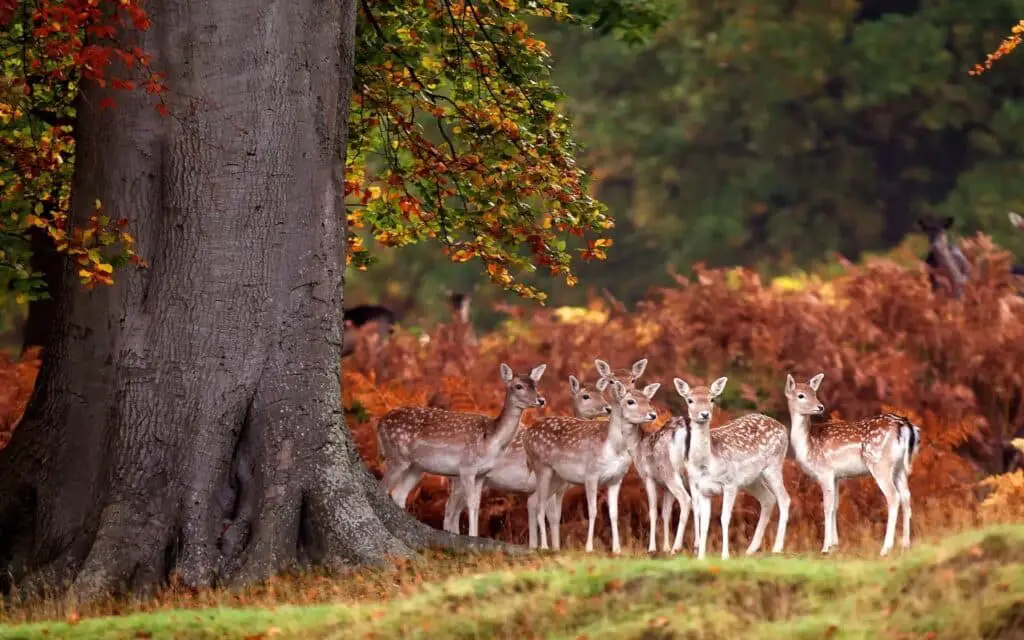
Conclusion
Biodiversity refers to the variety of living organisms in a particular ecosystem or habitat. It is a crucial aspect of the natural world as it contributes to the stability and resilience of ecosystems. Biodiversity can change over time, especially during the process of succession. Succession refers to the gradual and predictable changes in the composition and structure of an ecosystem over time.
During succession, the biodiversity of an ecosystem undergoes significant changes. Initially, in the early stages of succession, the biodiversity may be relatively low. This is because the ecosystem is often colonized by a few pioneer species that are able to tolerate harsh environmental conditions. These pioneer species are typically well-adapted to the challenging conditions and are able to establish themselves in the ecosystem.
As succession progresses, the biodiversity of the ecosystem increases. This is due to the arrival of new species that are better adapted to the changing environmental conditions. These new species may be able to outcompete the pioneer species and establish themselves in the ecosystem. As a result, the biodiversity of the ecosystem increases as more species are able to coexist and occupy different niches within the ecosystem.
Furthermore, as succession continues, the biodiversity of the ecosystem may reach a peak and then stabilize. This is known as the climax community, which represents the most diverse and stable stage of succession. The climax community is characterized by a high level of biodiversity, with a wide variety of species coexisting and interacting with each other. This high level of biodiversity contributes to the overall health and functioning of the ecosystem.
Biodiversity changes during succession as the composition and structure of an ecosystem evolve over time. Initially, the biodiversity may be low, but it increases as new species colonize the ecosystem and outcompete the pioneer species. Eventually, the biodiversity may reach a peak and stabilize in the climax community. Understanding how biodiversity changes during succession is important for conservation efforts and the management of ecosystems.
Learn how biodiversity changes during succession and understand the ecological processes that drive these transformations. Explore the dynamic relationship between species diversity and ecosystem development in this informative guide.


